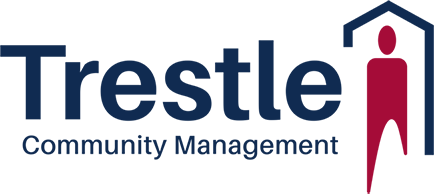Why HOA Assessments Vary: Key Factors & Budgeting Season Insights for Homeowners

As fall gets underway, many community associations enter a critical phase – budgeting season. If your community’s fiscal year starts on January 1, the budgeting process has likely started, with preparations underway for finalizing next year’s financial plan. As Homeowners receive their proposed assessment rates, many may wonder why assessments can vary so much between communities. The answer lies in the unique characteristics of each community, including its size, location, and the amenities it offers.
Why Do Assessments Vary Between Communities?
Community association assessments are fees that Homeowners in associations, whether part of a Condominium (COA) or Homeowners’ Association (HOA), pay to maintain common areas, amenities, and essential services. However, these fees can vary widely depending on several key factors:
- Community Size and Composition: Larger communities often benefit from economies of scale, which may reduce the assessment per Homeowner. Conversely, smaller communities may require higher contributions per Homeowner to cover similar services, simply because the costs are shared among fewer individuals.
- Location and Local Regulations: The cost of living and local labor markets significantly affect assessments. Communities in high-cost regions may face increased expenses for maintenance, insurance, and utilities. Additionally, regional regulations may mandate certain maintenance or improvements that drive up costs.
- Amenities and Services Offered: Communities with a wealth of amenities, such as swimming pools, and fitness centers, will naturally have higher assessments to cover the cost of maintaining these features. Similarly, communities that offer extensive services like snow removal, landscaping, and trash collection may require higher fees to sustain those services.
- Age and Condition of Common Areas: Older communities or those with aging infrastructure may require higher assessments to fund necessary repairs and replacements. In contrast, newer communities with recently updated facilities might have lower assessments as fewer repairs are needed. Proper reserve planning helps address future repairs and upgrades, reducing the need for surprise special assessments.
- Reserve Fund Contributions: A well-managed reserve fund can stabilize assessments over time. Communities that are proactively saving for future repairs and major projects might have higher assessments to ensure sufficient reserve fund contributions. Those that delay saving may face financial shortfalls down the road, potentially leading to special assessments.
Budgeting Season: A Crucial Time for Homeowners and Boards
For most community associations, budgeting season starts in the fall, with the goal of approving next year’s financial plan by the end of the year. Budgeting is more than just balancing the books; it involves planning for both day-to-day operational costs and long-term projects. A key aspect of this process is the reserve study, which helps the Board anticipate the costs of maintaining and replacing community assets over time.
The budgeting process typically involves the following steps:
- Initial Planning: The Association Manager and Board of Directors collaborate to review historical expenses, projected costs, and reserve fund contributions.
- Reserve Study: An independent reserve specialist assesses the current state of the community’s common areas and estimates future repair and replacement costs.
- Budget Drafting: A draft budget is prepared, detailing expected expenses and income, which is typically generated through Homeowner assessments.
- Ratification Meeting: Homeowners are invited to review and ratify the proposed budget. In Washington State, for example, the budget is automatically ratified unless a majority of Homeowners vote to reject it.
The Value of Professional Management
Working with a professional community management firm like Trestle can streamline this process, providing expert advice on financial planning, reserve fund contributions, and expense management. Trestle’s approach ensures that budgets are prepared accurately and on time, giving Homeowners transparency and confidence in their community’s financial health.
Final Thoughts
While it may seem confusing that assessments can vary so much between neighboring communities, these variations reflect the unique characteristics and needs of each association. As budgeting season progresses, Homeowners can gain a better understanding of their assessments by reviewing their community’s budget, attending Board meetings, and participating in budget ratification processes. By doing so, they ensure that their community is financially sound and prepared for the future.
Connecting with Trestle
In addition to visiting Trestle’s website, you can stay connected via LinkedIn and Facebook for more insights and updates.



